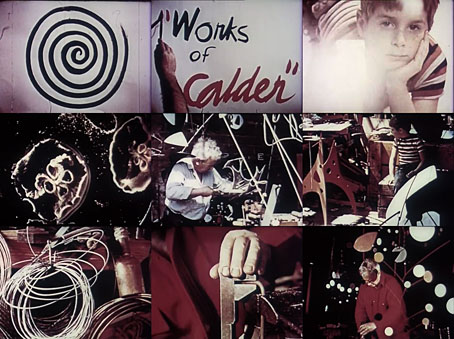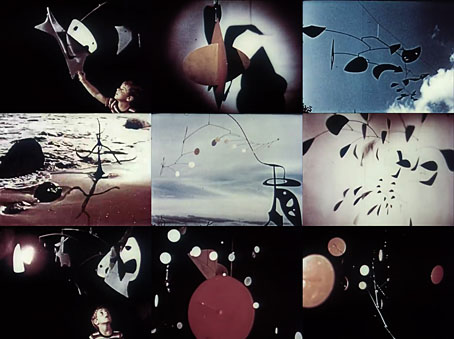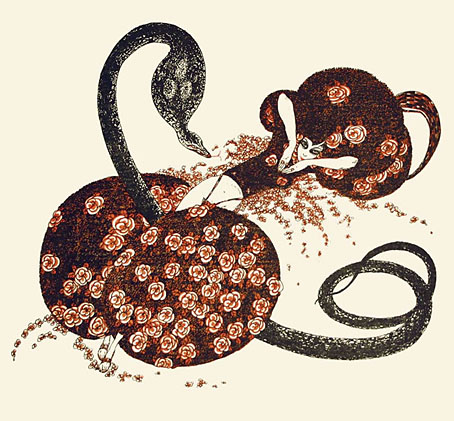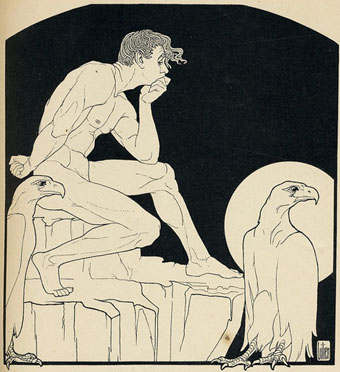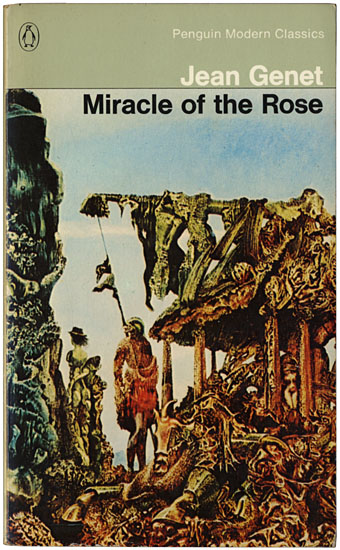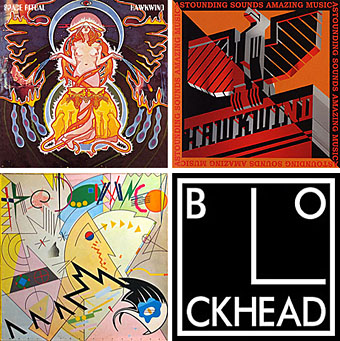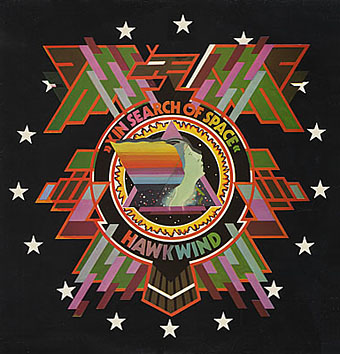The “Calder” being artist Alexander Calder in a 20-minute portrait by photographer Herbert Matter, with music by John Cage and narration by Burgess Meredith. A small boy (Matter’s son, Alex) wanders along a beach then into a workshop where he finds a man identified in the narration as “Sandy Calder” cutting sheets of metal into shapes for his mobile sculptures. The film aims for the poetic but also happens to show us the mundane labour involved in creating artworks which, 70 years later, you’ll only encounter in a gallery or museum. I’m not a Cage expert but I think the music is from his pieces for prepared piano.
I used to wonder what happened to Calder’s reputation in the 1980s, a question I still don’t have an answer for today. In the 1970s, when I started reading books about contemporary art, those mobiles were always mentioned somewhere. The “mobile” concept was an influential one, in the world of home decor as much as the art gallery, easily copied and exploited. When Calder died in 1976 much of the earlier interest in his work seemed to die along with him. This may only be my perception, of course; in the USA all his huge public sculptures have remained unavoidably visible if nothing else. Whatever the answer, the Calder Foundation has more films about the artist and his work at their YouTube channel. This one was brought to my attention by Ace Jet 170, a blog from the 2000s which remains active, and still posts new discoveries now and then.
(A note about the aspect ratio: the film was shot in 4:3, and should look as it does in these screen grabs. The YT copy is another one of those uploads which have been stretched to 16:9.)
Previously on { feuilleton }
• 8 x 8: A Chess Sonata in 8 Movements
• Dreams That Money Can Buy

